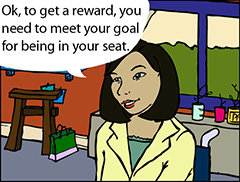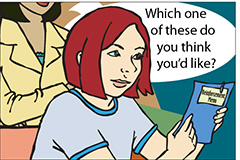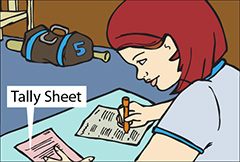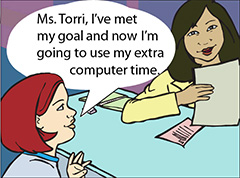What techniques will help Alexandra and Zach become independent learners, and how can they gain those skills?
Page 7: Self-Reinforcement
Have you ever given yourself a reward when you accomplished a task, like eating a decadent dessert after making a deadline? This is called self-reinforcement and it occurs when individuals select a reinforcer and reward themselves for reaching or exceeding a criterion.
Benefits for Students
 Self-reinforcement produces substantial improvement in performance.
Self-reinforcement produces substantial improvement in performance.- The strategy actively involves students in their learning environment.
- It serves to teach a skill beneficial to independent adult living.
- Self-reinforcement creates greater changes than teacher-imposed rewards.
(Smith & Rivera, 1993)
Using a self-reinforcement strategy involves a four-step process.
Step 1: Set a Goal for Receiving Rewards
The teacher and students should set a goal that must be met if the student is to receive rewards. Goals should be clear and objective. For example, “Do better at math” is not a good goal; “Get 80% on my weekly test” is much better.

Step 2: Select a Reinforcer
Next, select a reinforcer. If possible, involve the student in this process. Students know what is rewarding to them. One good way to do this is with a reinforcement menu.

Step 3: Determine Student Evaluation Procedures
Determine how students will evaluate their work. For example, students may self-correct or bring their work to the teacher to check.

Step 4: Administer the Reinforcer
This step may or may not be monitored by the teacher. For example, the student might check with the teacher first or simply self-reinforce if the goal is met or exceeded. It is important to remember that the student, not the teacher, should administer the reward.

For Your Information
Reinforcers are often more effective if the student is involved in the selection process. The teacher may ask the student to suggest possible reinforcers or may provide a reinforcement menu for the student to choose from or rank order. See the table below for possible reinforcers.
| Tangible | Social | Activity-Related |
|
|
|
Remember: What is reinforcing for students will vary according to factors such as age, personality, culture, and gender.